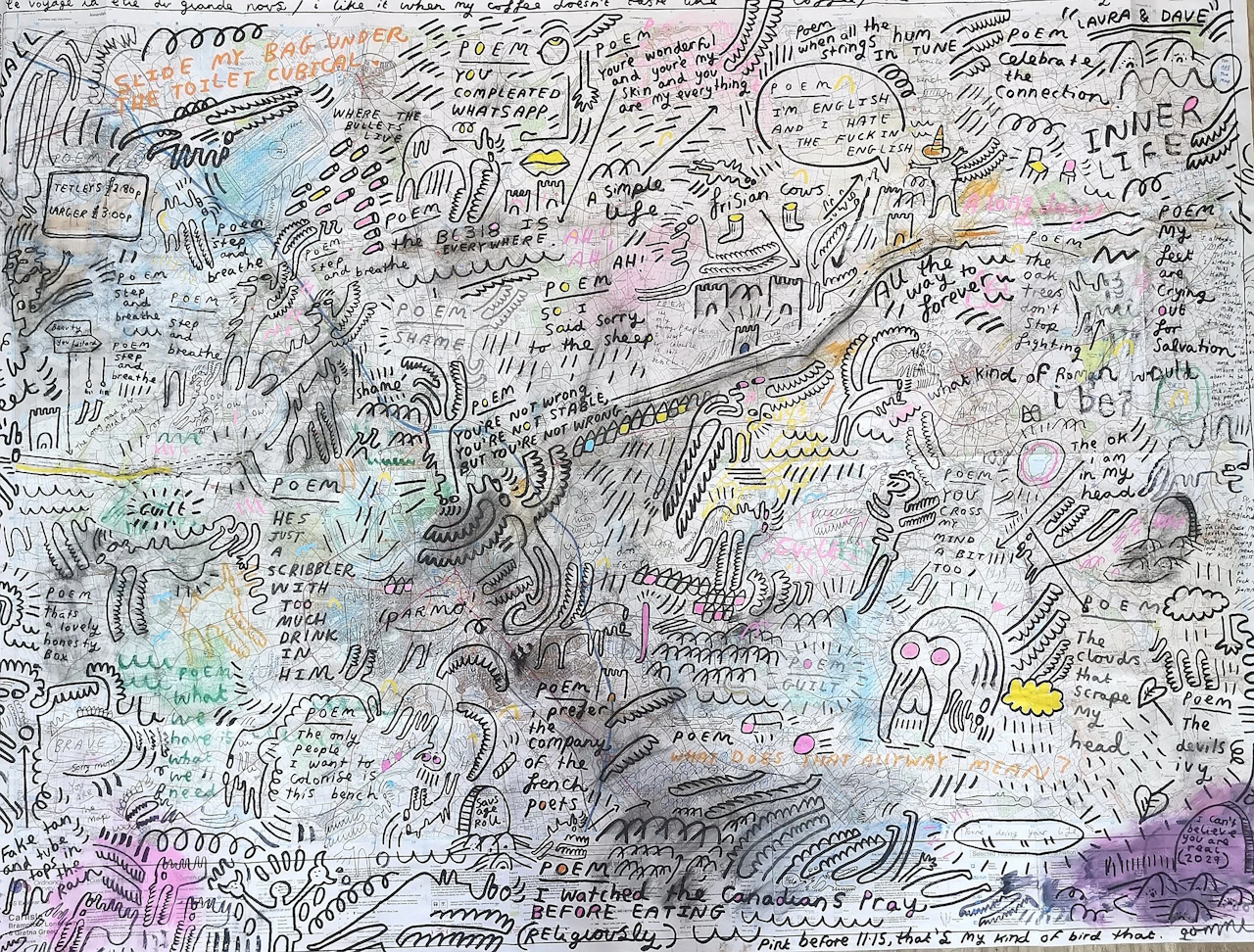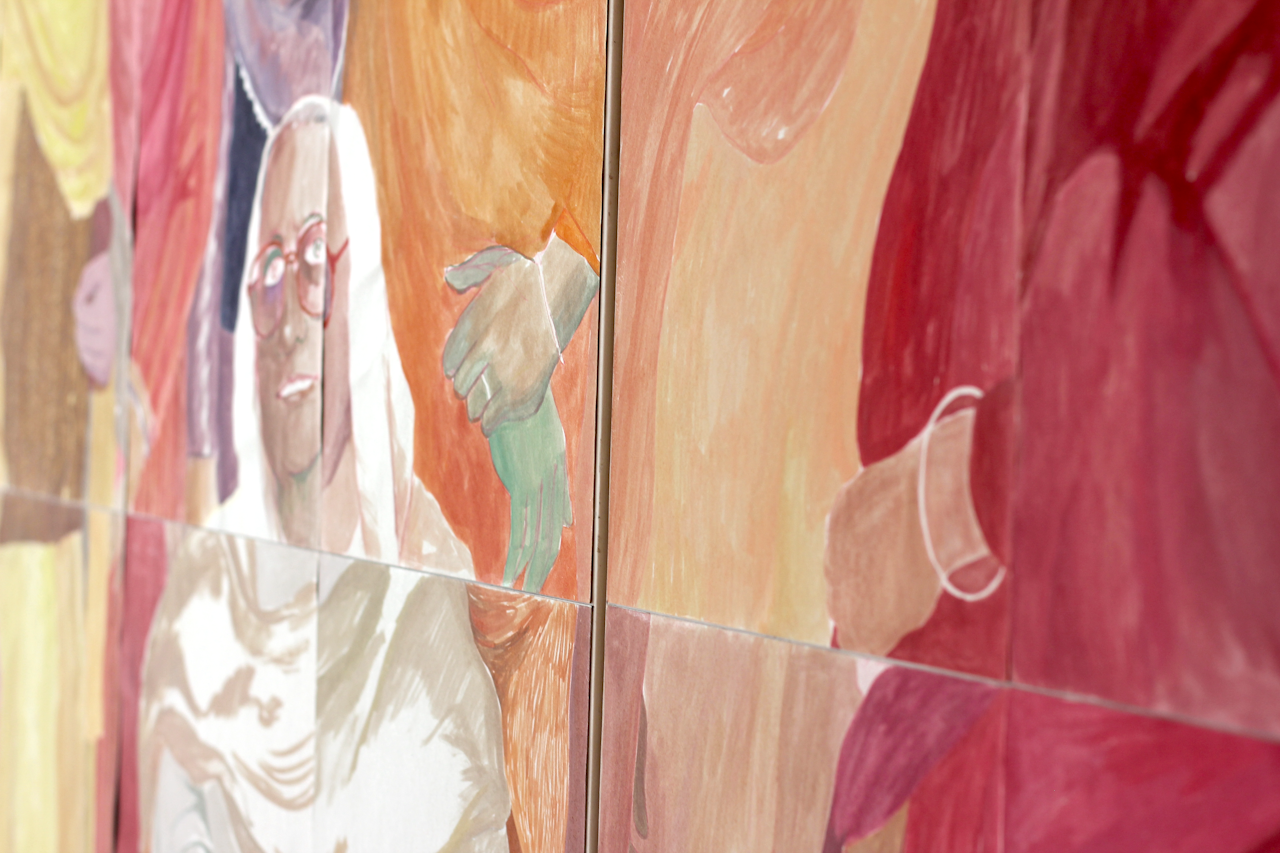
Steve McPherson
Inside The Studio: A Conversation With Steve McPherson
We travelled to Margate to visit Steve McPherson in his remarkable studio and gain insight into the ideas and processes that shape his work.
Steve McPherson is a contemporary artist best known for his intricate assemblages made from found objects and plastic debris - materials he has been collecting along his local coastline for over thirty years. Each fragment, wave worn and sun bleached, carries a story of time, place, and environmental change.
Although colour blind, Steve arranges these discarded materials with an intuitive sense of order - sometimes grouping them by colour, at other times by unique systems of taxonomy. The resulting works are both visually striking and conceptually layered, prompting reflection on our relationship with the natural world and the human-made detritus that inhabits it.
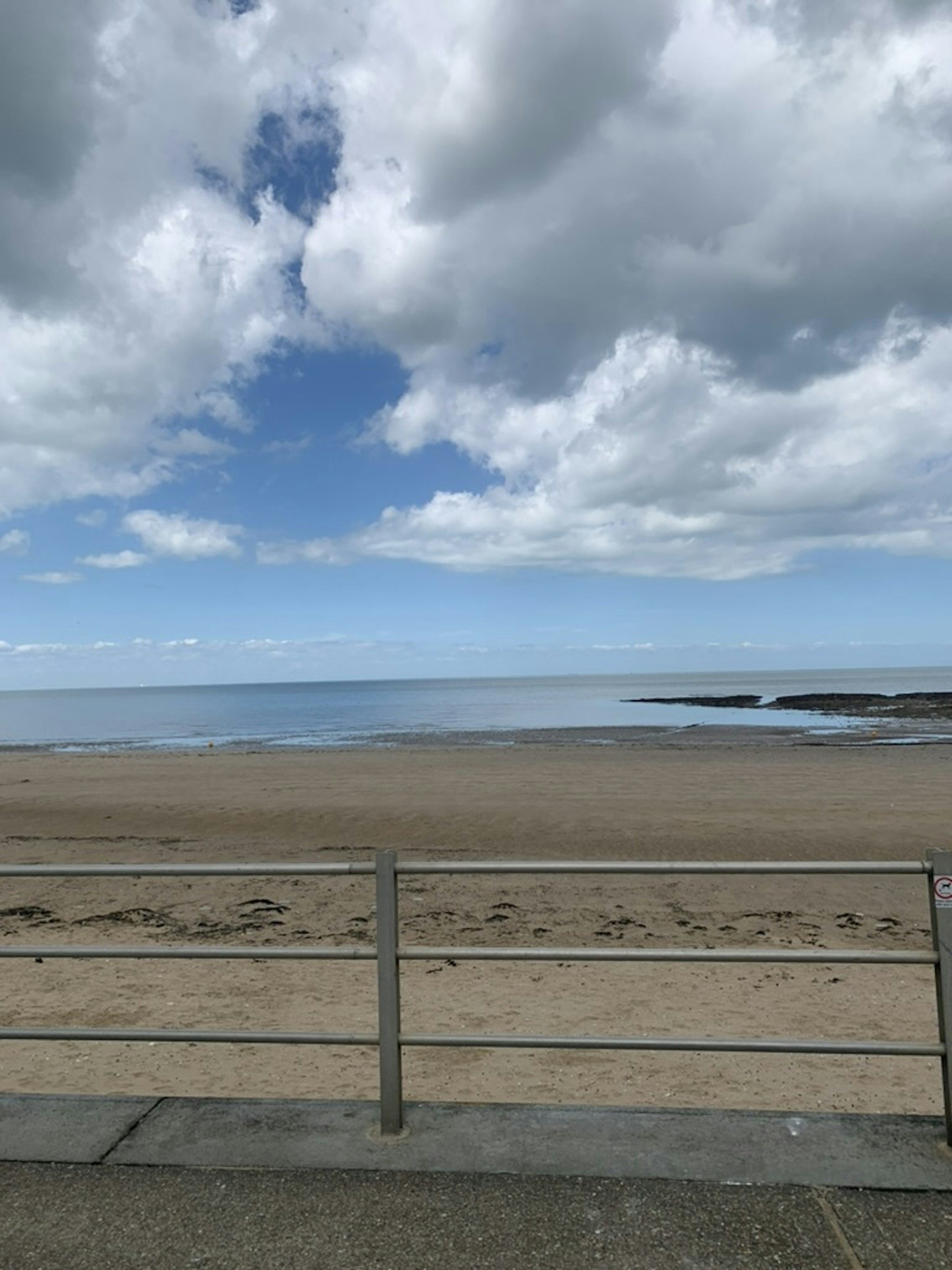
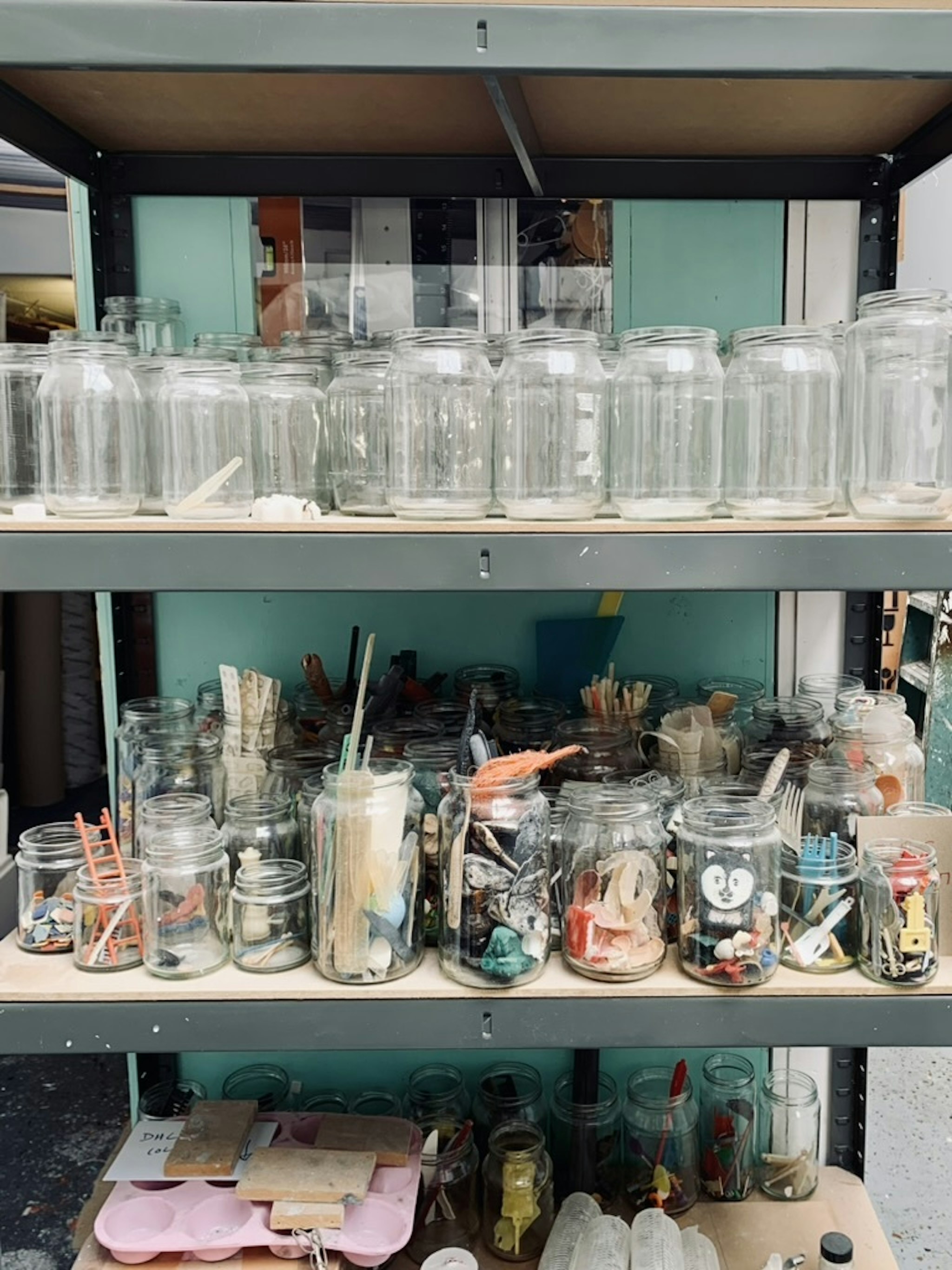
Can you tell us a bit about how you first started collecting marine plastic/objects and where the inspiration came from to turn them into artwork?
I have lived near Margate on the coast nearly all my life, and as a child I would regularly bring objects home from the beach and present them to my grateful and tolerant mother. I was an avid collector; boxes of militaria, postcards, badges, keyrings, fossils, scented erasers, and whatever other 1970-80s fad filled my bedroom cupboards. I walked with my eyes searching the ground for objects on the street and beach, they were another part of this collector compulsion.
Over time the items entered my artworks in collage and visual journals. On the sands my eyes began to focus more on the machined plastic objects whose synthetic shapes and colours where in opposition to the natural hues of the tide line. The more I looked the more I found. These lost objects, broken, scarred, and damaged by the hostile marine environment, were not only treasure, but contemporary archaeology, whose value, significance and histories had been lost in the waves. In 2007 the found objects moved out of my journals and became the core of my collecting obsession, creating artworks formed in boxed frames, influenced by the aesthetics of museology.

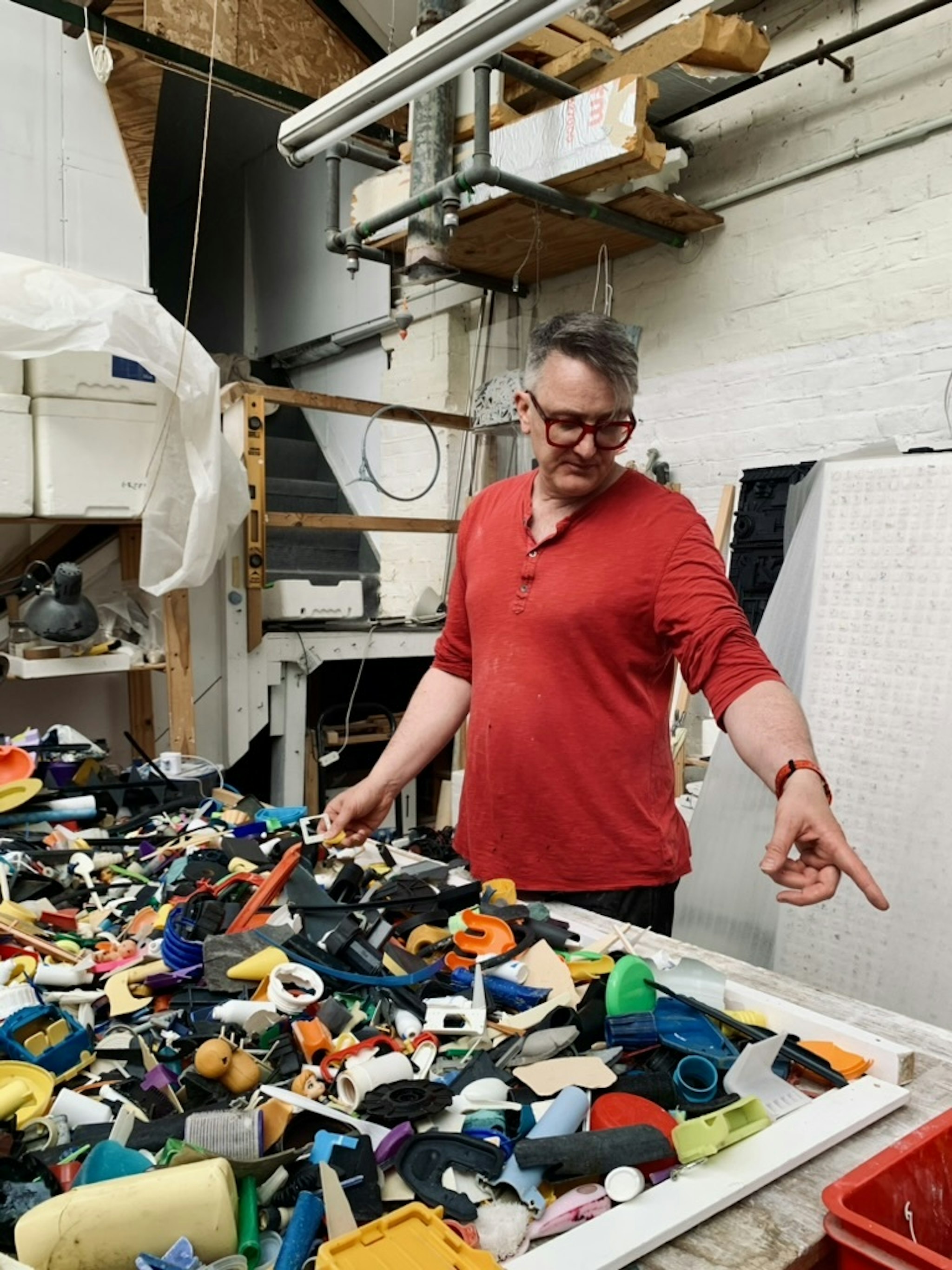
Obviously, there is an environmental angle to your work, is this something you’ve always been interested in or has your interest grown since developing your practice?
From even before my teens, I was aware and had concerns about human impact on the planet. But after witnessing the plight of plastic on my local coastline, my interest and concerns have grown. Plastic is a local and global problem, and science is only just beginning to understand the impact it has on living organisms, including ourselves. Plastics and its leached relative chemicals have now been discovered in not only most of animal life on the planet, but also in every part of the environment on Earth, be that land, sea or sky.
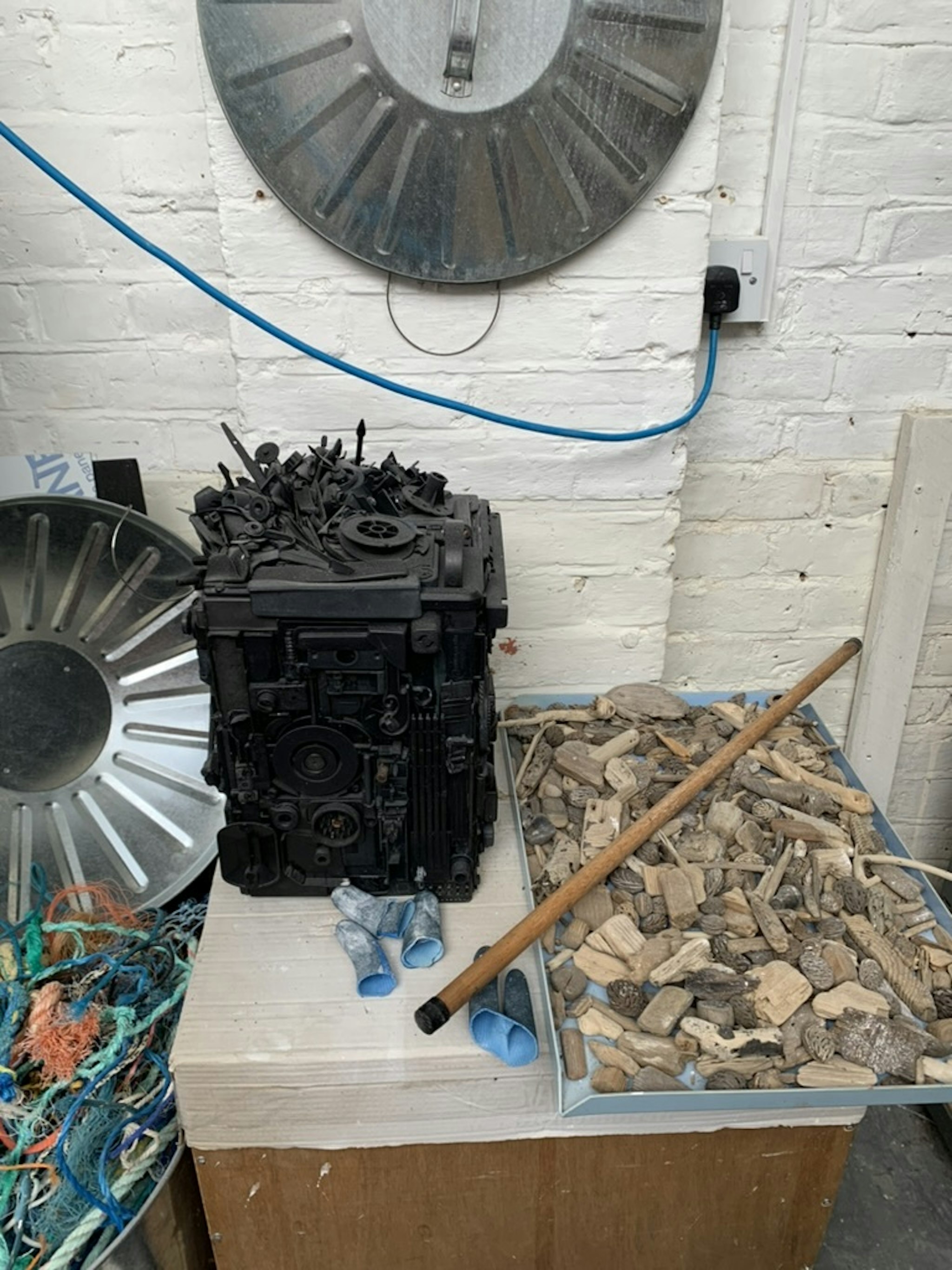
I sometimes work with marine and ecological groups to further the awareness of our polluted seas. Where my art has and continues to become starting points for thoughts and discussion. Conversations in front of my works often turn to people’s personal experiences of the coastlines they visit, or the change in choices they have made due to their increase in knowledge of the impact of plastics on the environment and society.
At home I do what I can to recycle and reuse, and to make positive consumer choices. I believe starting to make changes as an individual is important. In my work life I strive to create with my own impact in mind. Very little in my studio is disregarded and discharged into the waste stream, and I find there is constant potential in that which we could deem to be waste.
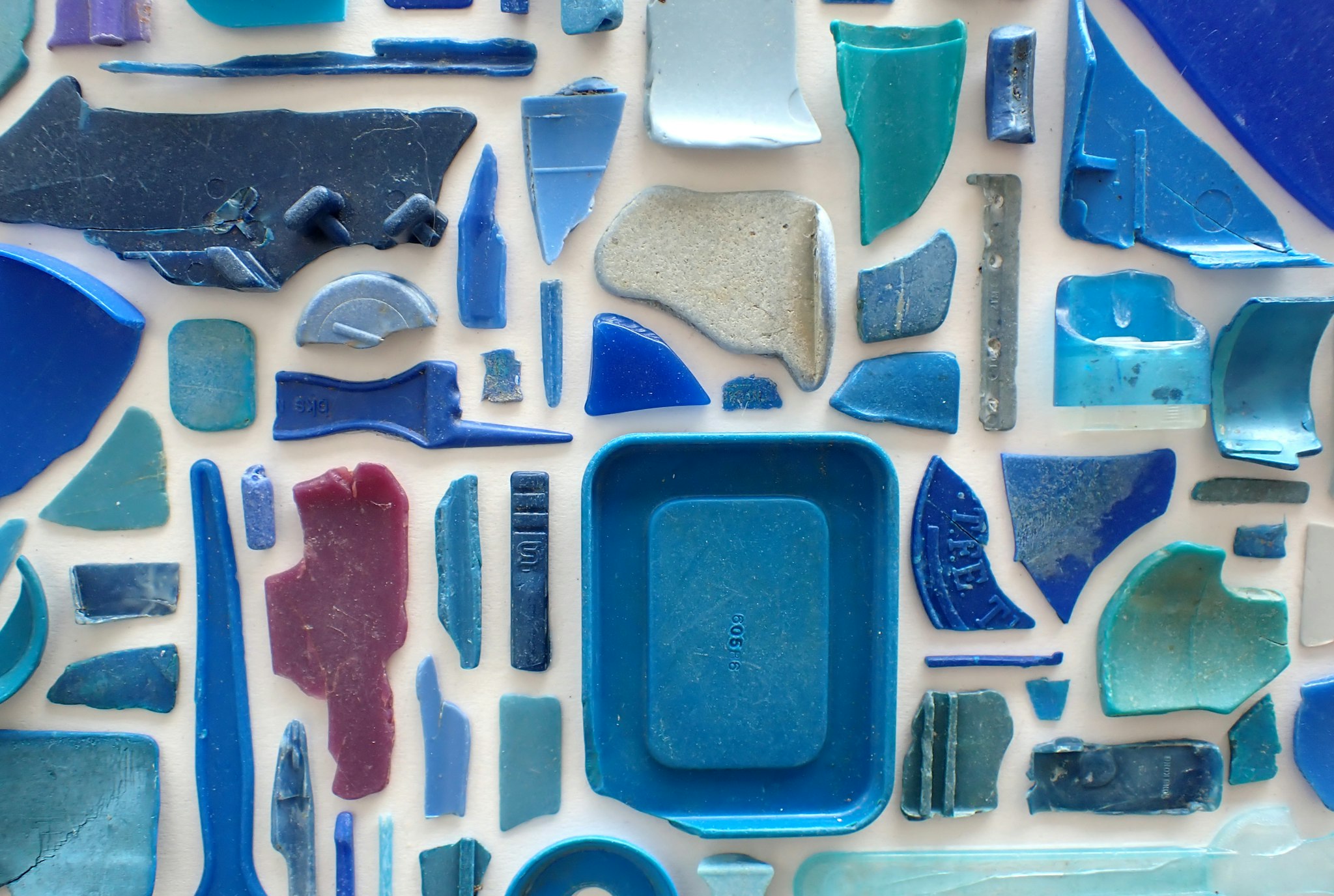
What is the most interesting and also weirdest object you have found while looking for material?
I have literally found and picked up tens of thousands of objects over the last 30 years of beach combing, and sometimes the discovery of an object takes you by surprise. From WW2 gas masks, messages in bottles, a PlayStation game controller, Bakelite switches, computer keyboard buttons, bank cards, Cereal box freebie gifts from the 70’s and 80’s, and countless toys, buttons, cutlery, false fingernails and other interesting and identifiable objects. All pique my interest. I have few favourites, but it’s always a good day when you find a small toy figure, whose discovery takes you to a child who played in the sun and lost their toy to the sand.
After scouring the beach for so many years, I have come to the conclusions that there are not many, if any, subjects that have not been replicated, reproduced, or moulded in some form or another in plastics; religious iconography, science fiction, buildings, animals, plants, weapons and objects of war, food, money, vehicles, icons of popular culture, all things from real and imagined worlds. However, I have been surprised by the discovery on two occasions of sex toys on the beach. Degrading on the sands amongst the other discarded detritus of our lives, they laid useless and silent, arousing only questions.
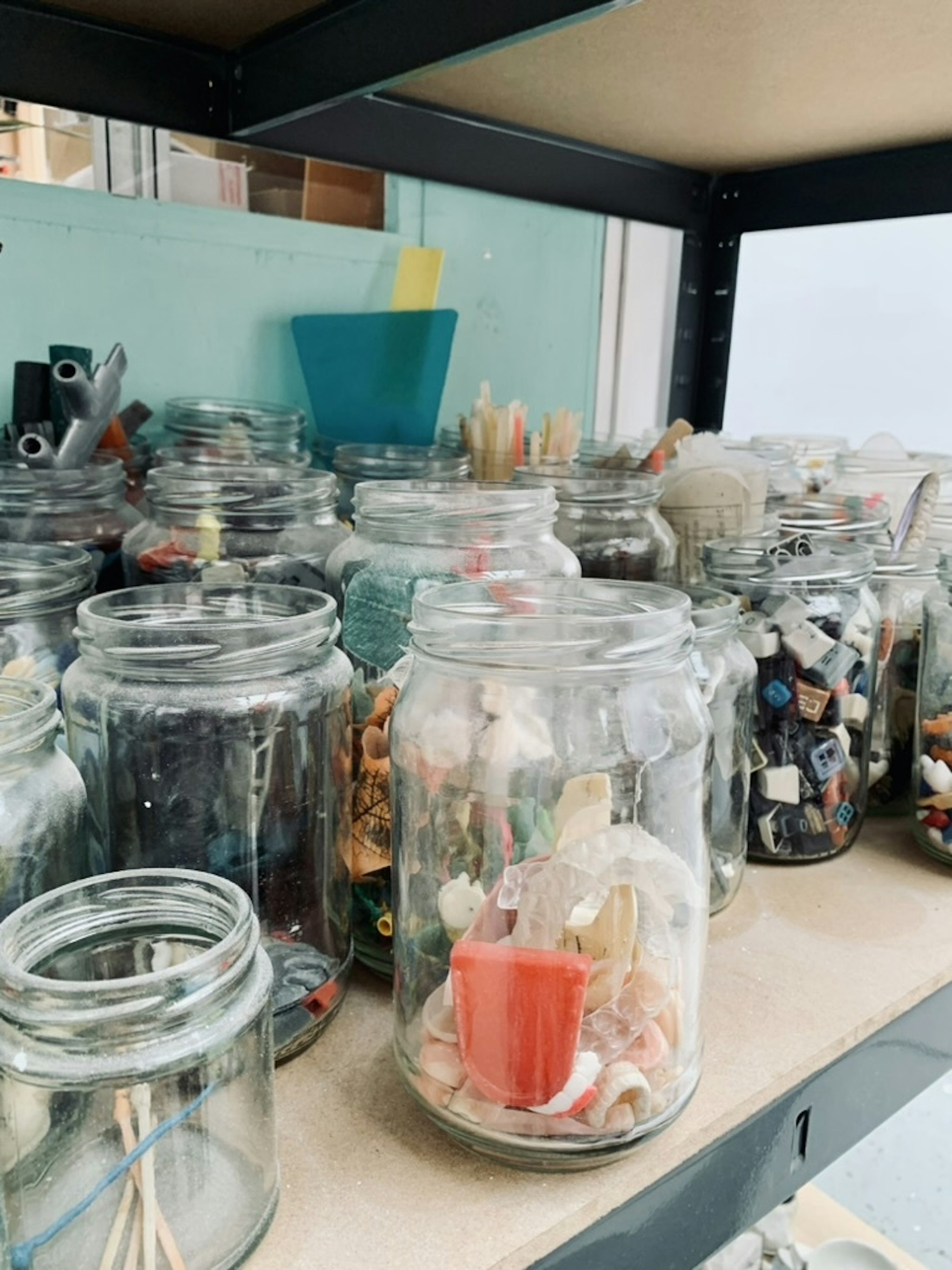
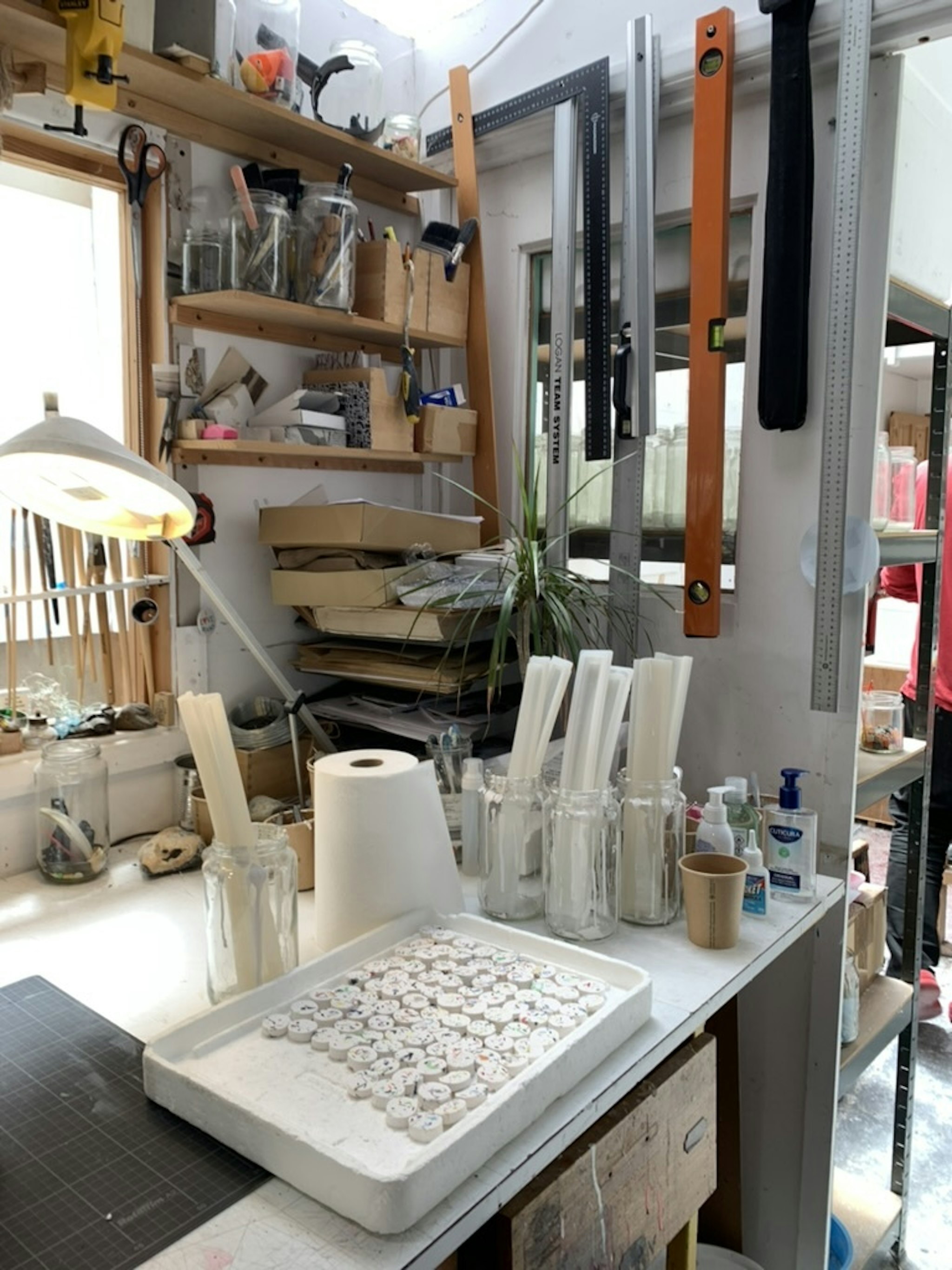
You’ve been collecting washed up beach objects for over 30 years now, have you noticed a change in the landscape and objects that you find during this time?
The marine environment is always in flux, that’s one of the things I love about it. The tide rises and falls twice a day, and with that the landscape of the beach can change dramatically. The local beaches I visit are cut out of chalk cliffs and are sheltered by the subsequent reefs left behind from their natural erosion. The beach can be sand in the morning and a white wave cut platform of chalk, studded with flints and fossils by the afternoon. Each tide brings new treasures and reveals those that have been buried from previous tidal flow.
As the landscape changes so have the variety of objects I find. Less tourist ice cream spoons and chip forks, (many cafes have now moved back to wooden varieties). Less Smartie lids and bread tags. More mobile phone pieces, sim cards and computer parts. Much more recently the pandemic brought a blight of face masks, still steadily appearing, not protecting, not saving just polluting.
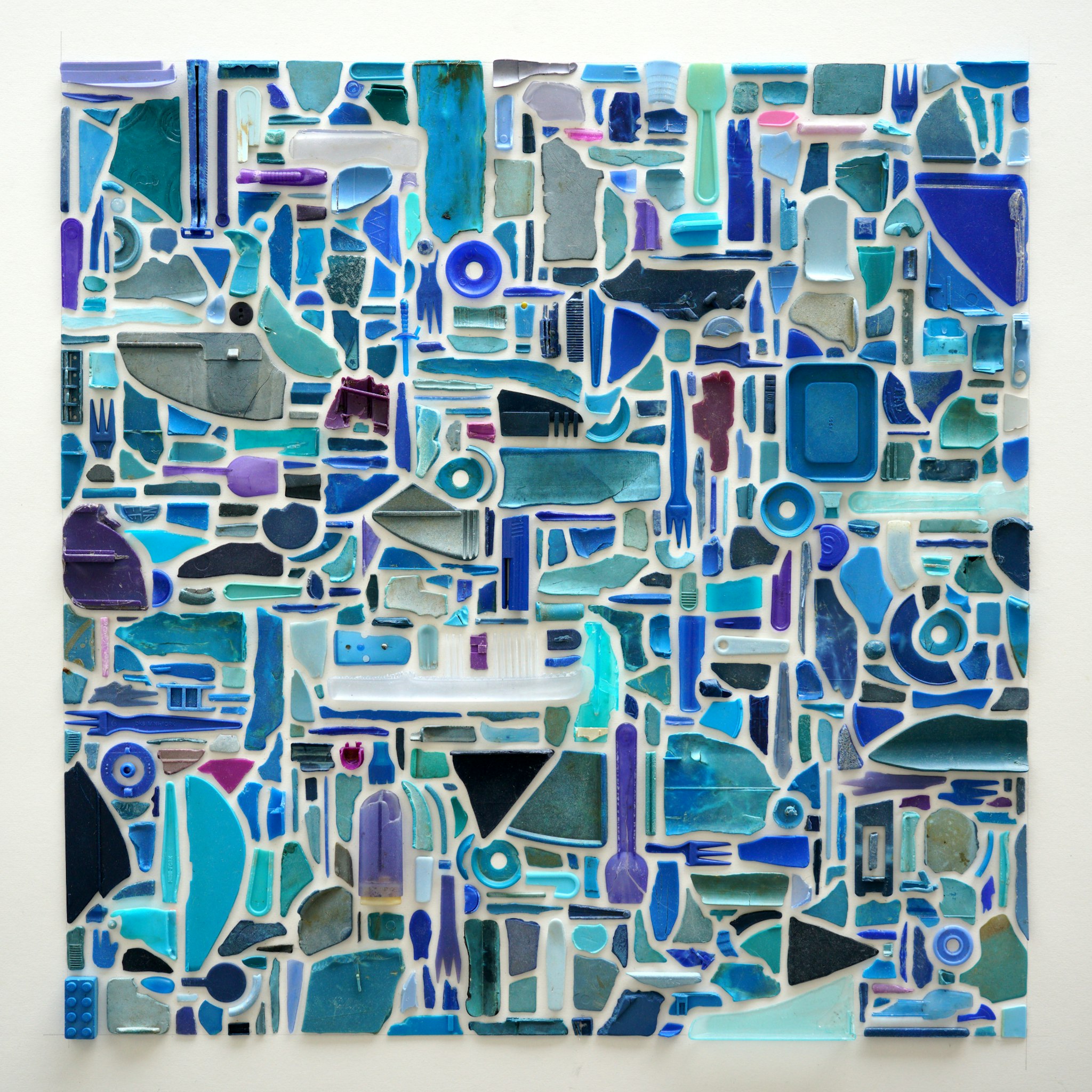
The title of the show is “Synthetic Legacies” - what legacy would you like your work to leave behind?
Since the invention of plastic over 100 years ago, we have been laying down millions of future fossils in the natural environment. Those objects will remain, they will from part of a colourful synthetic seam marking our time in the planet’s geology.
A product of the petrochemical industry, plastics are synthesized from hydrocarbons born in the ancient past, it is historical in its formation, the moulded objects I use are archaeological in nature, and alchemical through my process. Presented as artifacts they have their own yet unknowable histories. They are cultural objects and have a shared social history, in turn the viewer can bring their own history to them. I find each piece potent and full of mystery, and like charms of divination, they speak of the past and at the same time have something to say about the future. Even the smallest unidentifiable pieces can be objects of power, full of wonderful mystery, seeds for curiosity, and conduits of memory. They raise questions in the viewer about the human legacy on the environment, and our personal impact, actions, and interactions with others.

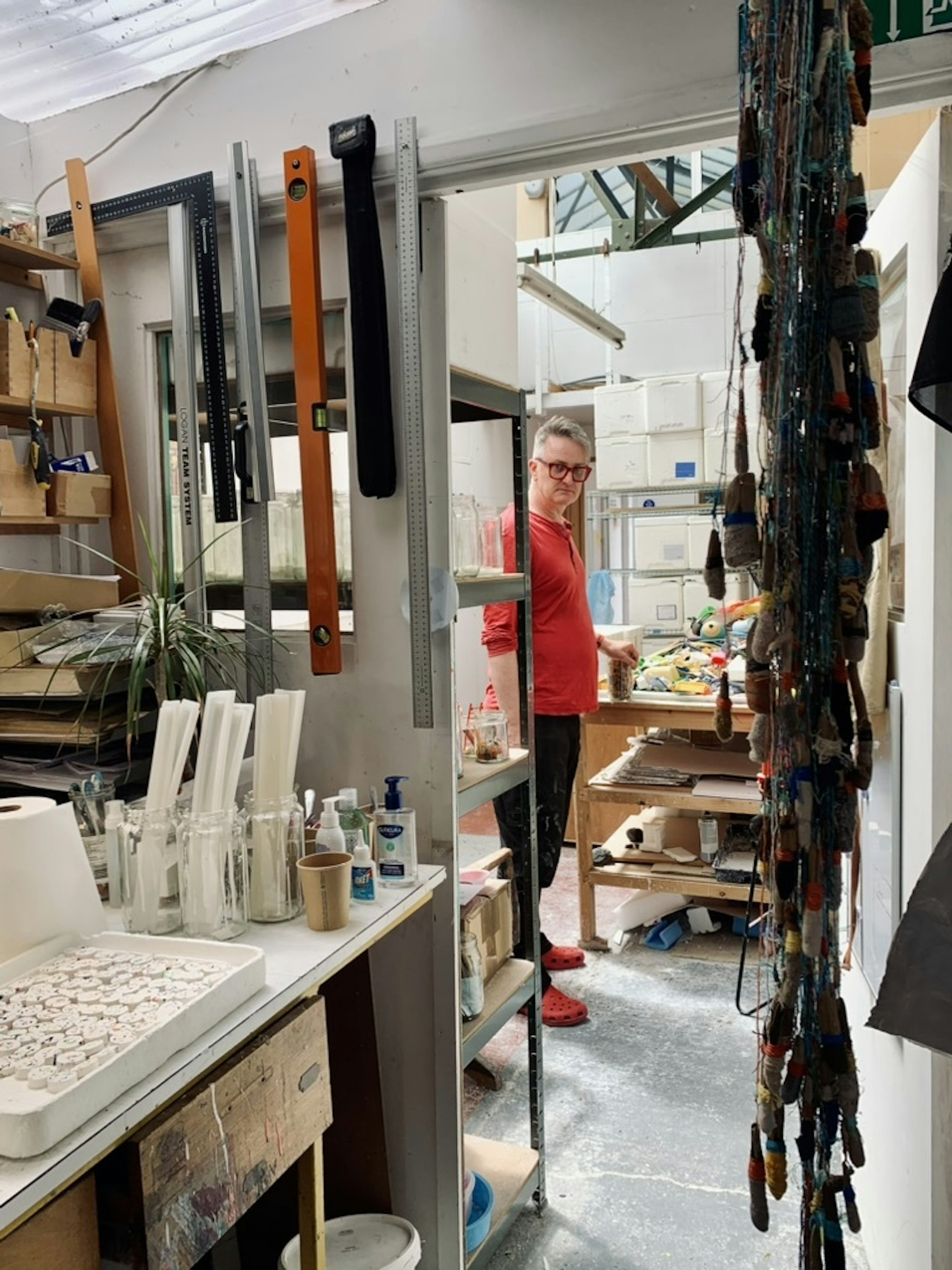
Thinking about introducing art into your space?
From homes to workplaces to social spaces, art has the power to shift how environments are seen, felt and remembered.
If you’re shaping a space and exploring the role art could play, we’d love to hear from you.

